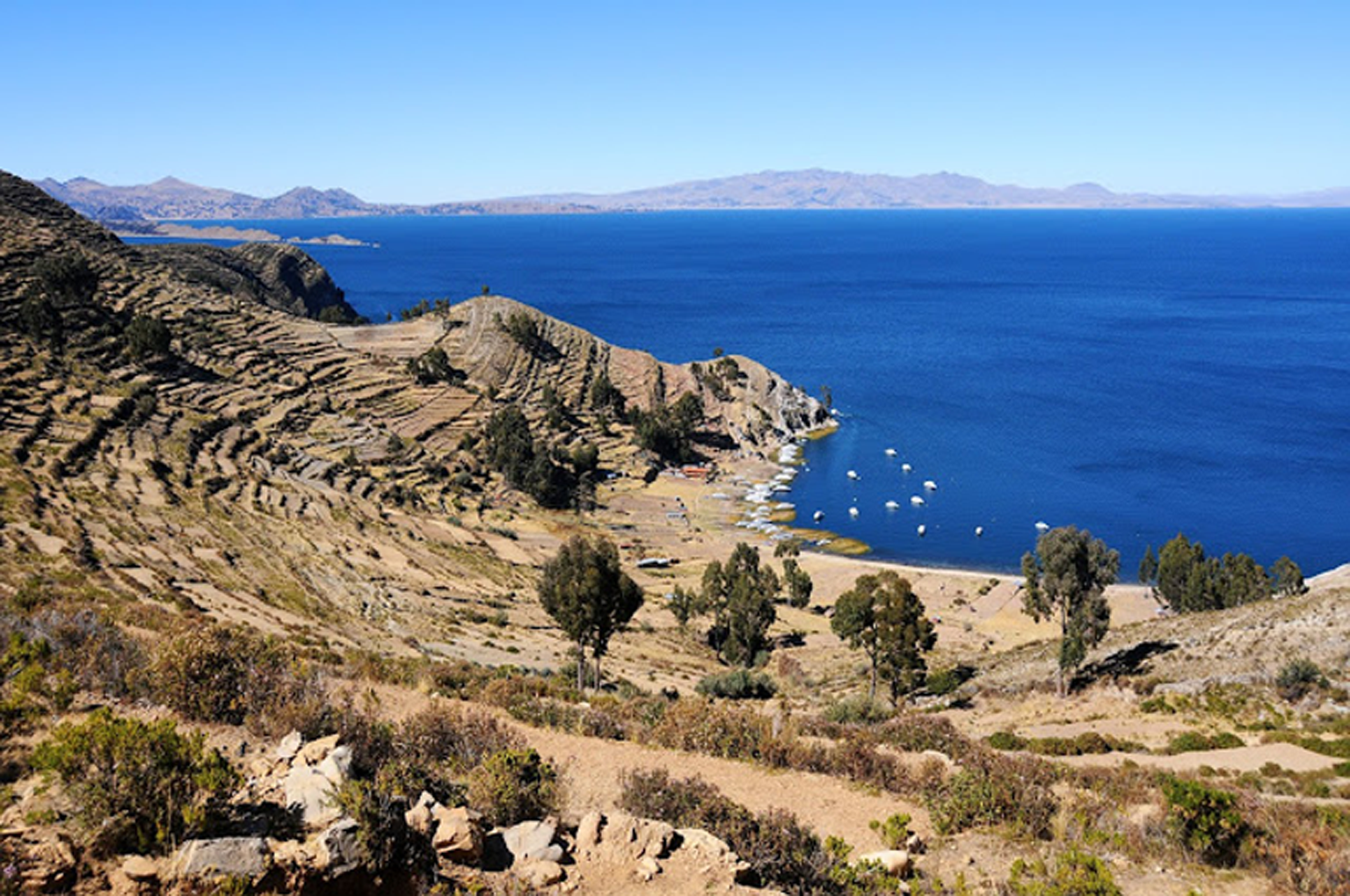- Posted by:
- anjci
- Under:
- Travel tales, Travel: Eastern Europe
We meet on Kyiv’s Independence Square where the guide checks our passports and dress code. I have thoughtfully brought an extra pair of socks to protect a short stretch of flesh over my shoes. The strategy proves to be right: the more skin is covered during the visit to the still radioactive area around the Chernobyl Nuclear Power Plant, the better.
On the 2-hour journey from Kyiv, we watch a documentary about the disaster. Most of us already know the story: on 26 April 1986, a safety test at Chernobyl NPP went badly wrong. Two resulting explosions completely destroyed one of the plant’s four reactors, releasing massive amounts of radioactive substances into the air. Over 100,000 people from the surrounding areas were promptly evacuated and hundreds of thousands of workers were called in to deal with the consequences of what is still considered to be the world’s worst ever nuclear accident.
After an hour of images no less than terrifying, some of us are having second thoughts about continuing the journey. Our guide Konstantin doesn’t make it any better. “Don’t worry about the radiation,” he says. “It’s higher than at Fukushima but normal for Chernobyl.”
Needless to say that we all sigh with relief when it turns out to be a joke.
Background radiation 28 times normal? Hilarious, isn’t it.
Into the Exclusion Zone
There is no way back by the time we reach Dityatki – the check point at the entry to the so-called Exclusion Zone. The area covering a 30 km radius around the Chernobyl NPP is considered to be the most contaminated by the disaster. Our passports are checked again; the most enthusiastic of visitors are not wasting any time and start snapping the colourful warning shields around. Most carry yellow symbols of radioactivity. Even our bus has one on the front pane where the name of the destination would normally sit instead.
The road to the town of Chernobyl passes several signs indicating the location of villages whose population was promptly evacuated after the disaster. One by one, they dash in front of our eyes. The village of Kopachi is entirely buried under sand – an extreme measure by the rescue workers (known as the liquidators) to prevent the radiation from spreading.
The surrounding nature is intensely green, and the air streaming in through the open roof of our bus surprisingly fresh. Grass, weeds and overgrown bushes are decidedly taking over the environment once harnessed by human activity. The Ukrainian law forbids any kind of industry in the Exclusion Zone, and – radiation aside – the place could closely qualify as a natural reserve. Some say the areas to the east of the Zone are free from radiation altogether and winning back permanent residents – with real estate prices beginning to match those in Kyiv.
“Stop! Forbidden area”
Suddenly a rather well kept building comes into view. Fresh curtains are dancing in the half-open windows and wooden panels look like someone has replaced them recently.
A silent question in everybody’s eyes is soon answered: Konstantin says that, yes, many original residents – 800 by some estimates – have resettled in the area since the disaster. “They were homesick elderly people”, he adds. “Who felt they belonged here, radiation or not.”
We reach the town of Chernobyl which, despite our expectations, does not exactly look abandoned. There are people in the streets and an occasional truck wheels past on a decently maintained central road. Despite the popular perception of Chernobyl being a ghost town, people continue to work there. The surrounding forests have flourished in the absence of industrial activity and brigades of fire fighters monitor the site to prevent fires that could raise radioactive particles into the air. Then there are water specialists – ensuring that the water in the cooling pond around the notorious Reactor 4 is kept at a certain level – as well as scientists, researchers and support staff.
A further 3,000 people are employed at the Chernobyl NPP itself. Many of them are former residents of Pripyat who were relocated to the town of Slavutych 50 km away and commute to Chernobyl daily. The plant stopped generating electricity years ago (in case you had any doubts) but the decommissioning of units 1, 2 and 3 will take much longer; possibly, generations of workers.
We continue to the town of Pripyat along what our guide calls the “most washed road in the world”. The 18-km stretch used to transport the liquidators to the critical point of the disaster was once generously washed every 24 hours to remove radioactive dust. Minimising the workers’ radiation intake along the way meant that they could stay longer at the disaster site.
Chernobyl to Pripyat. Note the border of the 10-km radius zone at Leliv
Finally a torch-shaped welcoming sign à-la Soviet Union emerges into view: we have reached Pripyat. The town was purpose built for the workers of the Chernobyl NPP in 1970 and had a population of 50,000 at the time of the disaster. A model Soviet city, Pripyat was once shown to foreign delegations as an example of the USSR’s successful achievements in nuclear development.
What we see though is far from the bustling, young city Pripyat once was. With not a sign of human life in the streets, visiting here is a spooky experience. Buildings stare at us in windowless silence, tree branches sticking out from the inside. Most of us soon feel uncomfortable but there is no way back.
Entering Pripyat

Hotel Polissya. Top floors offer a great view onto the central square.

The Energetik cultural centre’s performance hall

Ferris wheel. The brand new fairground was due to open on Mayday.

Teremok, the abandoned kindergarten

A brochure dedicated to International Women’s Day, widely celebrated in the former Soviet Union

Mayday booklet. The Chernobyl disaster happened only days before, on 26 April.

We visit hotel Polissya, the Energetik cultural centre, kindergarten Teremok, a fairground and School Number 2. Pripyat’s population was evacuated 36 hours after the explosions – in what was possibly the world’s most impressive mass evacuation – and it is obvious that people left in a rush. Books and toys are scattered over the kindergarten floor. Unpaired shoes lie forgotten in the massive sports hall at the Energetik. In one corner I find a class timetable prepared by the music teacher. The last date marked is 28 April 1986; a lesson planned two days after the disaster. And some blackboards still bear traces of chalk.
Class timetable, two days too late

Such incredible mess there is around though – with school desks turned over and baby cots stripped – that we cannot help thinking someone has repeatedly visited the site before us, searching for anything remotely valuable. Konstantin tells us guards were placed throughout Pripyat to keep the looters away, but couldn’t do much. Former inhabitants were told to leave their personal possessions behind, and many residential blocks and official buildings have seen regular looting raids.
A friend lost in Pripyat

Newspaper dated April 1986, the month when the time stopped

I searched in vain for the matching pair

Classroom for military education

School library. Looters not interested in reading.

Our next stop is a shining new canteen serving the workers of Chernobyl NPP. As an authoritative-looking woman with an apron on feeds us a 3-course lunch (no, seriously), some workers collect their meal trays from the other end of the hall. They do not even look at us; Chernobyl first opened its doors for tourism 10 years ago and is visited by several tour groups daily.
Reassured by the guide that all food ingredients are imported from outside the Exclusion Zone, I finish lunch early and go for a walk towards the carcasses of Reactors 5 and 6. They were nearly finished at the time of the disaster and the site is still surrounded by cranes crouched in a variety of positions. Just like in Pripyat, no-one here was expecting to leave when – in the words of the documentary we saw on the bus – their world was “wiped out by an invisible enemy”.
A 3-course lunch at the Chernobyl NPP canteen

Chernobyl NPP canteen serves the workers involved in the decommissioning of the plant
The most interesting part of the tour is saved for the finale. We continue towards Reactor 4 – the epicentre of the disaster. The pond once used by the power plant for cooling is literally swarming with overgrown catfish. Its size isn’t the result of radioactive mutation, however (as most of us seem to think at first), but rather reflects the fact that the fish face no predators in the pond. The guide goes on to tell us that, according to certain scientific tests, excessive radiation has only been found in the skin and bones of the fish, and eating it might not be as bad as most imagine. Unsurprisingly though, we do not see much fishing activity around.
Our final stop is within 100 meters of Reactor 4 – the closest visitors are allowed to the disaster site. As everyone rushes to have their photo taken on the dramatic background (blame the radiation overdose), I stand aside and scout the walls of the so-called Sarcophagus. A concrete structure sealing the destroyed reactor was designed to last for about 10 years and, 25 years later, bears visible signs of weariness. With over 200 tonnes of radioactive horror still locked within those walls, one would shudder to imagine the flaky roof plunging in. It doesn’t bear thinking about.
The Geiger counters are by then screaming themselves hoarse, and it is time to leave. Back in Dityatki, a vertical machine – so-called dosimeter – measures individual radiation levels at exit. I sigh in relief as it gives me a green light. The radiation exposure from a sole day in the Exclusion Zone is minimal – in fact I probably get far more serious dosages from cruising at 30,000 feet every week – but it will be a very long time until one can feel at ease in a place like Chernobyl. If ever at all.
Cooling pond and Reactor 4

Monument in front of Reactor 4

(View Flickr photoset for Chernobyl here)






















anjci says:
June 30, 2011 at 8:04 am
Thanks so much, Michelle. How very kind of you! Yes, the food tasted surprisingly good, but don't think people will be flocking in from outside the zone for a mere taster : )
Let me know if you ever decide to visit Chernobyl and have any questions. Other comments / suggestions on the blog and stories are also most welcome! Take care.
Michelle says:
June 14, 2011 at 2:01 am
Just love your blog. Your photos are amazing, and what an interesting Chernobyl trip. I wouldn't even care if that food was imported from outside the Exclusion Zone. It looks delicious 🙂
Comments are closed.